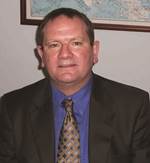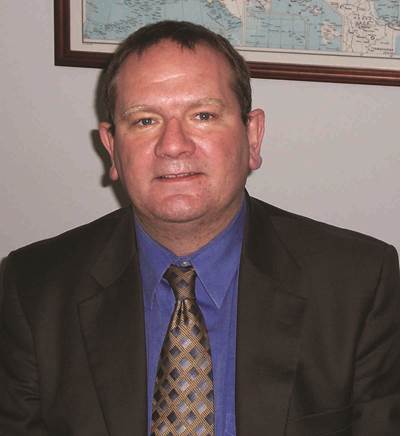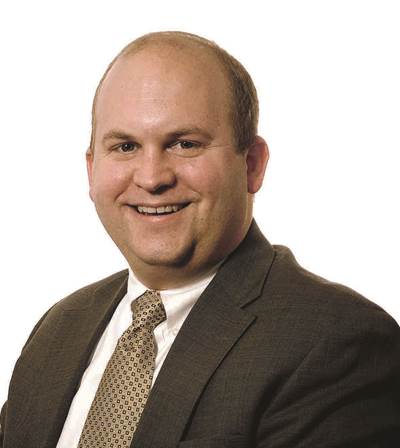Shared composite material property databases
Work at NCAMP is proceeding, with several new materials undergoing testing.
Over the years, HPC has devoted considerable ink to the National Center for Advanced Materials Performance (NCAMP) and its ongoing efforts to establish a centralized composite material property database. The group’s efforts have been newsworthy: “Composite materials are really still in their infancy, compared to metals,” Yeow Ng, NCAMP’s associate director, admits. “We need to develop material property data that government agencies and OEMs will readily accept, as metals data are accepted.” NCAMP, part of the National Institute for Aviation Research (NIAR) at Wichita State University (Wichita, Kan.), has made significant progress toward that goal since our most recent report (links to that report and other previous related articles are under “Editor's Picks,” at right).
Progress toward standardization
As composites-industry practitioners well know, the number of possible combinations of fibers and resins — and how they’re combined during processing — is almost infinite. Although this flexibility is a boon to designers, the trade-off is that material properties can vary widely and, sometimes, unexpectedly. Unlike metals, whose properties are typically known independent of the structures in which they are used, composites’ properties are, in large part, determined as they are manufactured, says Dr. John Tomblin, NIAR’s executive director. He notes that “the ratio of fiber and resin, orientations of fibers, ply schedule, and selected fabrication process all have their effects on the ultimate performance, which can’t be known until the part is cured and subsequently tested.” To minimize risk in critical airframe applications, it is necessary to establish rigorous material and process controls and testing regimes that will yield statistically valid material and design allowables.
Traditionally, large, statistically significant testing programs have been undertaken at great expense. Although funding sometimes has been provided through an aircraft program or a government agency, it has come more often from the individual airframe manufacturers themselves. Such testing regimes require considerable time and money and often prove prohibitive for general aviation manufacturers. The resulting databases, therefore, are typically considered proprietary and are rarely (if ever) shared with other manufacturers, says Ng. “The metals industry shares its data amongst suppliers and users because they don’t consider it worth hiding. Agencies accept the data without question,” Ng points out. “In our industry, this selfish mind-set has cost us. It’s not the material, necessarily, that makes the difference — it’s design and engineering.”
Efforts to change the situation gained traction in the U.S. with the Advanced General Aviation Transport Experiments (AGATE) initiative, funded by the Federal Aviation Admin. (FAA) and the National Aeronautics and Space Admin. (NASA) in the mid-1990s. In essence, AGATE attempted to encourage the use of composites in general aviation by shifting the responsibility for generating basic composite material property data from end-users to the supplier(s) that produce the material. The goal was to generate sets of data for commonly used materials and share that data with airframe fabricators. After the database was generated, the end-user could confirm equivalency by executing a small test batch of samples to verify that its process could produce the same results as those associated with the standard material in the database. Thus, the process of specifying a composite material for aircraft would be greatly simplified and much less costly.
Although AGATE ended in November 2001, NCAMP was established in mid-2005 by NASA Langley Research Center (Hampton, Va.) as a permanent national center at NIAR. NCAMP was tasked with continuing AGATE’s shared material property data mission — for the entire aerospace industry, not just for general aviation — and taking it to a self-sustaining level. NCAMP works in partnership with the FAA and Composite Materials Handbook (CMH-17, formerly MIL-HDBK-17). So far, this group has completed several qualification and equivalency programs and continues to expand its base of material suppliers, says Ng. “There is a lot going on here, although it might not look that way from the outside. We’re engaged in a cost-sharing effort with a wide variety of partners.”
Off-the-shelf materials?
Ng explains that, depending on the funding source, material suppliers provide materials either to NCAMP or directly to participating aerospace companies, a 45-member list that includes Airbus, Bell Helicopter Textron, The Boeing Co., Cessna Aircraft Co., Gulfstream Aerospace Corp., Northrop Grumman Corp., Sikorsky Aircraft and Spirit AeroSystems. Those companies fabricate test panels for qualification tests or equivalency tests and return them to NCAMP for the actual laboratory testing. The majority of the testing is done by NIAR, but NCAMP also uses outside test labs, such as Cincinnati Testing Laboratories (Cincinnati, Ohio) and three materials suppliers’ labs: Advanced Composites Group Inc.’s at its home base in Tulsa, Okla., Cytec Engineered Materials Inc.’s (Tempe Ariz.) in Anaheim, Calif., and Hexcel’s (Dublin, Calif.) in Salt Lake City, Utah. Some companies make qualification panels, and others produce equivalency panels during the same time period. The properties from all panel tests are pooled to create a larger dataset, Ng explains, providing aerospace companies with a better model of data distribution. All generated data meet CMH-17 Revision G requirements for complete documentation. In addition, they comply with several U.S. Department of Transportation (DOT)/FAA guidance documents and, therefore, more guidance is available now than during AGATE.
FAA inspectors and engineers oversee panel preparation and witness testing to ensure pedigree. Ng adds that some technical details with regard to CMH-17 need to be resolved. “For example, CMH-17 only includes lamina-level data right now,” he notes. “We are working with CMH-17 leadership to include laminate-level properties, which include properties like open-hole tension, bearing strength and so on, so that engineers can better design stacking sequences. Hopefully, our consensus-building process will allow us to move toward that type of data.”
According to Ng, several milestones have been reached over the past 18 months. These include the completion of qualification and equivalency testing for several of Advanced Composites Group Inc.’s MTM45-1 product forms, including 6781 glass, G30-500 plain weave and HTS 12K unidirectional prepreg. NCAMP also is finalizing testing on Hexcel’s 8552 IM7 and AS4 unidirectional prepreg. Testing is underway for Hexcel’s 8552 AS4 plain-weave prepreg and Cytec’s 5215 and 5250-5 prepregs.
In 2008, NCAMP received funding from the Air Force Research Laboratory (AFRL, Dayton, Ohio) Composite and Hybrids Branch to generate material property data and qualify Renegade Materials Corp.’s (Springboro, Ohio) trademarked MVK-14 Freeform polyimide T650 3K 8HS composite prepreg at operating conditions up to 500°F/260°C wet and 550°F/288°C dry. The material was voted by NCAMP’s members as the high-temperature polyimide for which airframe fabricators most wanted property data because it forms the matrix of a potential substitute for titanium in both airframe and engine applications. NCAMP developed documents for the test program, including the test plans and material and process specifications. Canyon Composites (Anaheim, Calif.) was selected to fabricate the qualification panels. Eleven aerospace companies are participating in the equivalency program, including ATK (Clearfield, Utah), BAE Systems (Arlington, Va.), GE Aviation (Cincinnati, Ohio), Goodrich Aerostructures (Riverside, Calif.) and Pratt & Whitney (East Hartford, Conn.). Testing should be complete sometime in the summer of 2011, says Ng.
NCAMP announced in late 2009 that it had chosen Cytec’s 5320-1 medium toughness out-of-autoclave prepreg system and Cytec’s 5276-1 high-toughness prepreg system for its newest material qualification program, again based on member balloting of NCAMP manufacturers and Tier 1 aerospace suppliers. Funding is being provided by AFRL/RXBC (part of AFRL’s Nonmetallic Materials Div.). NCAMP is working with Cytec and the participating aerospace companies to select the product forms (fiber, fabric style, areal weight, etc.). Two product forms will be qualified with each resin system. The program is scheduled for completion within two years. Interest in CYCOM 5320-1 is high due to its vacuum-bag curing capability, with good hot/wet properties and mechanicals, making it an option for structures too large for autoclave processing.
Allowables information
Information about NCAMP’s programs and testing results is available through its online portal. Viewable contents include not only general information and the latest NCAMP test schedule but also draft material property data reports, statistical analyses, test plans, and material and process specifications (https://www.niar.wichita.edu/NCAMPPortal/). Data is available to the public through the portal at no charge, says Ng, although users are asked to complete a free online registration form that will enable NCAMP to alert the visitor to updates.
The group recently announced a tutorial, in partnership with CHM-17, on "Statistics for Allowables Generation and Equivalency Data Analysis,” scheduled on July 19 in Costa Mesa, Calif. This session is offered in conjunction with CHM-17 meetings that will take place during the remainder of the week. Payment for the tutorial qualifies attendees to participate in the subsequent meetings.
Ng concludes, “We can make the composites industry more efficient through availability of basic material allowables and material and process specifications. By making composite materials more accessible and usable, we have a chance to make vehicles lighter and transportation systems greener — we want to give all material suppliers the incentive to participate.”
Related Content
Infinite Composites: Type V tanks for space, hydrogen, automotive and more
After a decade of proving its linerless, weight-saving composite tanks with NASA and more than 30 aerospace companies, this CryoSphere pioneer is scaling for growth in commercial space and sustainable transportation on Earth.
Read MorePEEK vs. PEKK vs. PAEK and continuous compression molding
Suppliers of thermoplastics and carbon fiber chime in regarding PEEK vs. PEKK, and now PAEK, as well as in-situ consolidation — the supply chain for thermoplastic tape composites continues to evolve.
Read MoreCarbon fiber in pressure vessels for hydrogen
The emerging H2 economy drives tank development for aircraft, ships and gas transport.
Read MoreThermoplastic composites welding advances for more sustainable airframes
Multiple demonstrators help various welding technologies approach TRL 6 in the quest for lighter weight, lower cost.
Read MoreRead Next
Shared databases: The time is now!
Chris Ridgard (Advanced Composites Group Inc., Tulsa, Okla.) urges aerospace materials suppliers and aircraft manufacturers to join forces behind National Center for Advanced Material Performance (NCMAP) efforts to continue AGATE shared-database efforts.
Read MoreShared material databases: The next chapter
John Tomblin, Ph.D., is the executive director of the National Institute for Aviation Research (NIAR) at Wichita State University in Kansas. For 10 years, he has worked in the area of general aviation material qualification and, primarily as chairman of NASA's Advanced General Aviation Transport Experiments (AGATE)
Read More

















.jpg;maxWidth=300;quality=90)










